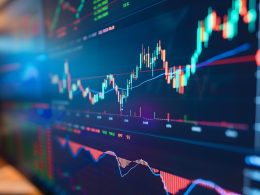Selling Hope
June 20, 2012
by Jason Hsu, Ph.D., Research Affiliates, LLC
Numerous studies show that most active managers fail to deliver “alpha” over time net of fees. And yet investors continue to pay high fees for active management. This article asks why investors persist in such seemingly irrational behavior. As long as active managers can keep on charging high fees, they will do so. It is time for investors to examine how much they are willing to pay for an elusive risk premium.
Many of us in the investment management business are fond of telling our clients that “hope is not a strategy.” Ironically, selling hope has worked out to be a fantastic strategy for investment managers. It may benefit investors to think twice about how much they want to pay for hope.
The Statistics of Hope
People invest to earn a return on their risk capital. For most investors, they hope for unrealistically high returns and often enter this game of chance with a flawed comprehension of statistics. Unsurprisingly, they engage in the ritual of paying high fees for the hottest performing funds only to achieve and be bewildered by below-average returns.
The following example illustrates the statistics of investment manager selection. Imagine that we organized 100 monkeys to flip coins. Each time a monkey flips heads, a banana is given to that monkey. After 10 rounds, 1 monkey is likely to have flipped 9 heads and earned 9 bananas.1,2 This monkey is also likely to start a business advising other monkeys on flipping coins, and, no doubt, charging plenty of bananas. Let me acknowledge that this example, while illustrative, is unfair. The research on investment manager performance is far more nuanced, and the issues are complex. However, in a recent academic paper “Why Do People Pay for Useless Advice?” Powdthavee and Riyanto found that people are readily willing to pay for [useless] forecasts on random outcomes such as coin flips.3
Specifically, when a forecaster had been accurate in “guessing” the last few coin flips, more people were willing to pay for his next forecast.
My interest here is not to explore the old topic of whether active investment managers possess the skill to deliver “alpha” net of their fees. Rather, I seek to discuss the seemingly irrational investor behavior of continually paying high fees for investment management, while receiving no appreciable investment advantage in return. As long as this irrational behavior persists, it is entirely rational that firms would peddle coin-flip forecasts. And, if they can package their service with enough panache to charge 2 and 20,4 by golly, they will do that! The Economics of Hope
The empirical evidence that the average fund manager underperforms and the recent top-performing funds do not outperform subsequently are irrefutable. Why, then, do investors insist on paying for investment management expertise, which isn’t all that useful? Perhaps investors are not really that interested in holding their investment managers accountable for outperformance. The Economist’s Buttonwood column5 argues that investors might only be interested in securing advice that confirms their own investment beliefs. The false sense of security that comes from hearing a “professional” concurring with one’s own opinions on unpredictable affairs makes the randomness that is inherent in investing almost tolerable.
Clearly, not all aspects of investment management are related to generating outperformance; many managers and advisors are really in the business of preventing their clients from making bad financial decisions, such as overconcentrating the portfolio, trading excessively or making decisions under emotional distress. Barber and Odean, in their 2000 Journal of Finance paper, found that aggressive self-directed investors underperform the market by an average of 6.5% per annum.6 These investors simply own too few stocks and trade too much due to overconfidence in their own stock-picking and market-timing skills. Jason Zweig, in his 2002 investigative report, documented that retail mutual fund investors underperformed the average mutual fund by 4.7% per annum.7 Again, this poor result is driven by investors actively switching between funds and market-timing their investment contributions.
Perhaps we have unfairly assailed active managers for their underperformance of 1.5%; perhaps they have sought to provide a greater good than “alpha” all along. If active mutual funds do nothing other than produce compelling marketing materials to convince investors not to “do it yourself,” maybe that is already a tremendous service to investors and warrants the fees charged. Yes, investors would have been better served by index funds. Sadly, investors are unmoved by the prospect of earning only a fair return for the risk they take. An investment manager is far more likely to succeed at earning an opportunity to save a client from himself if he sells the hope of big returns than if he echoes Bogle’s and Malkiel’s assertions that stock prices are random walks and investors should buy an index fund.
The 2 and 20 hedge funds are the harshest but perhaps the most effective medicine for the gung-ho gamblers, whose optimism triumphs all evidence to the contrary. It takes that special black-box mystique coupled with silvertongued sales (and those don’t come cheap) to wrestle investment control and potential ruin from these overconfident speculators. Conclusion
Hope may not be a strategy, but it is hard-wired into our genetic makeup. As investors, we often question the risk premium we earn for supplying capital; perhaps it is equally useful to reflect on the premium we pay for hope—how much are we willing to pay the temple high priest to speak sweet lies to us, to assure us that randomness can be predicted and superior investment results are largely determined by efforts instead of luck? Perhaps, deep down, we really do know that the next coin flip is unaffected by our soothsayer, but we nonetheless sleep easier knowing we have employed a high priest. And, for sure, the high priest WILL CHARGE and CHARGE DEARLY.
ABOUT THE AUTHOR
Dr. Jason Hsu oversees research and investment management at Research Affiliates. He directs quantitative research on the asset allocation and equity strategies. For his work, he has won the 2008 Institutional Investor 20 Rising Stars of Hedge Funds and 2005 William Sharpe Award for Best Index Research. Jason is also the winner of a 2011 FAJ Graham and Dodd Scroll Award and the 2011 FAJ Readers Choice Award given by the CFA Institute. Jason is also an adjunct professor in finance at UCLA’s Anderson School of Management. He has also taught finance at UC Irvine, Taiwan National University of Political Science, and Shanghai University of Financial Economics. Jason earned his Ph.D. in finance from UCLA, his MS in Finance from Stanford University, and graduated summa cum laude from the California Institute of Technology with a BS in Physics. He is a co-author/contributing author for five handbooks on investment and risk modeling and has authored more than 20 academic and practitioner journal articles.
Footnotes
1 The probability of flipping 9 heads in 10 coin flips is 10 * 0.5^10 = 0.976%. So we would expect about 1 out of 100 monkeys to have flipped 9 heads.
2 Note that there are more than 10,000 funds in the U.S, which means about 100 funds would have outperformed 9 out of the last 10 years by sheer chance.
3 Powdthavee, Nattavudh and Yohanes E. Riyanto. 2012. “Why People Pay for Useless Advice? Implications of Gambler’s and Hot-Hand Fallacies in False-Expert Setting.” Whitepaper, Institute for the
Study of Labor.
4 2% management fee plus 20% of returns above a benchmark.
5 June 9, 2012 Economist, http://www.economist.com/node/21556625.
6 Barber, Brad M. and Terrance Odean. 2000. “Trading is Hazardous to Your Wealth: The Common Stock Investment Performance of Individual Investors.” Journal of Finance, vol. LV, no. 2 (April):773-806.
7 Jason Zweig, 2002. “What Fund Investors Really Need to Know.” Money. http://money.cnn.com/magazines/moneymag/moneymag_archive/2002/06/01/323312/index.htm
Copyright © Research Affiliates, LLC













